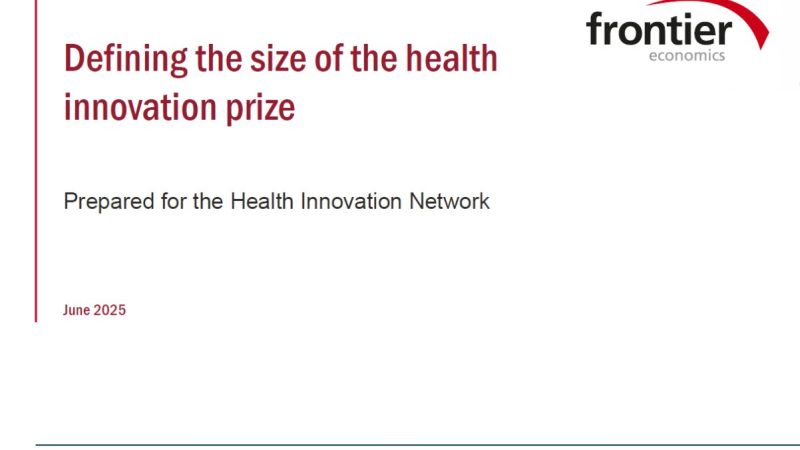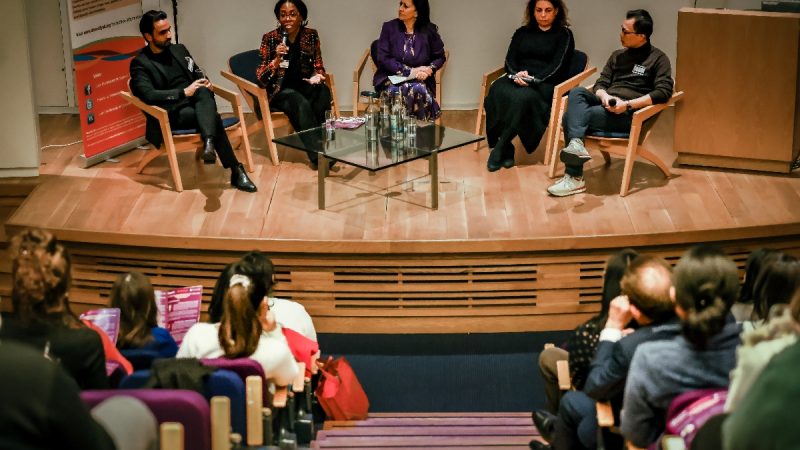Twentieth century feminism failed working class women

Fifty years of feminism has seen the wages of ‘the average woman’ narrow the gap with ‘the average man’ but the differences between women remain far greater than the differences between women and men, according to a new report published today (9th April 2013) by the think tank IPPR. The new analysis shows that women’s earnings remain more unequal than men’s. The report argues that these results suggest the advance of twentieth century feminism left working class women behind.
The gender pay gap has almost disappeared for women in their 20s, but opens up when women are in their 30s and 40s, especially for women who have children. Higher levels of education, especially having a degree, make a bigger difference to middle aged women’s earning than they do for men.
IPPR compared people born in 1958 and 1970 and controlled for education, social class, geography, whether or not they had children and at what age they had their first child. IPPR’s analysis shows:
- Women born in 1958 and working full-time earned almost 35 per cent less (at age 41 to 42) than men born in the same year. However, professional women earned nearly three times as much as women in unskilled jobs born in the same year (198 per cent extra), while professional men earned almost half as much more (45 per cent extra) more than men in unskilled jobs.
- The pay gap between men and women born in 1970, tested at a similar age (38 to 39), dropped slightly (to 29 per cent). But inequality fell between women and rose between men. Professional women born in 1970 were still likely to earn 80 per cent more than unskilled women, while professional men earned 61 per cent more than unskilled men born in the same year.
IPPR’s new analysis shows that, for both men and women, higher levels of education lead to higher wages in both cohorts. It shows that a degree benefits a woman more than it benefits a man, although the gap has closed. But while the premium associated with a degree is higher for women than it is for men, men (both with and without a degree) still earn substantially more than their female counterparts in both cohorts:
- A man born in 1958 was likely to earn 14 per cent more for holding a degree (asked at age 41 to 42), while a man born in 1970 was likely to earn 17 per cent more for holding a degree (at age 38 to 39). A woman born in 1958 was likely to earn nearly 34 per cent more for holding a degree. This declined slightly for women born in 1970, who could expect earn 32 per cent more than women without a degree. This shows that a degree benefits a woman more than it benefits a man, although the gap has closed.
- Although a woman enjoys a higher premium for a degree, she still earns much less than her male counterparts. Holding everything else equal, a woman without a degree born in 1958 was expected to earn about 52 per cent of the amount a man without a degree earns, based on weekly wages, while a woman with a degree was expected to earn about 71 per cent of a male graduate’s wage. Among those born in the 1970 cohort, women without a degree could expect to earn 59 per cent of a (non-graduate) man’s wages, while a female graduate could expect to earn 75 per cent of man’s wage.
Dalia Ben-Galim, IPPR Associate Director, said: “While feminism has delivered for some professional women, other women have been left behind. Many of the advances for women at the top have masked inequality at the bottom. The ‘break-the-glass-ceiling’ approach that simply promotes ‘women in the boardroom’ has not been as successful in changing family friendly working culture or providing opportunities for other women to advance.
“Gender still has a strong independent impact on women’s earnings prospects, but class, education and occupational backgrounds are stronger determinants of a woman’s progression and earnings prospects. Women are still concentrated in low paid and often part time work. Women with lower qualifications and those who have children at a younger age are finding it harder to secure good jobs and opportunities at work.
“Improvements in the difference between the ‘average man’ and the ‘average woman’ since the 1980s have taken place against the backdrop of stagnant social mobility, rising economic inequality, and a dramatic shift in the nature of work available. Today, with squeezed living standards, wage stagnation and increasingly unaffordable childcare there is a risk that lower paid women may fall even further behind.
“Too often, squeezed family finances force families to choose a traditional ‘male breadwinner’ family type because the impact of the ‘motherhood penalty’ too often leads to mum giving up work or taking a pay cut to work part-time.”
The report also shows:
- While the gender pay gap for men and women in their 20s has almost disappeared, the impact of having children still has a significant impact on the wages of mums and dads. While the earnings prospects of women who postpone having children have improved, things have got worse for women who have children earlier. As well as this ‘motherhood pay penalty’ (mothers earning less than women without children) IPPR’s analysis also reveals a ‘fatherhood pay bonus’ (fathers earning more than men without children).
- Eight out of ten married women (77%) do more housework than their husbands. Just one in ten married men (10%) do an equal amount of housework as their wives, while just over one in ten (13%) of women says their husbands do more housework than they do. The biggest advances have been made by women who do not have dependent children in their home. Just over one in five women (22 per cent) born in 1958, but without children, say their partner shares laundry and ironing equally. Almost a third of women (30 per cent) without children born in 1970 agreed.
- The number of ‘house husbands’ in Britain has trebled in the last 15 years, although there are still just 62,000 men who are economically inactive and say they care for family or the home.
- British women and men are choosing to marry partners who are increasingly from the same social class as themselves, despite modern society offering them more choice than ever before. There has been a decline in the number of women ‘marrying up’ over the last 40 years combined with a small increase in women ‘marrying down’. There are now more ‘marrying down’, than ‘marrying up’. The biggest increase however, has been in the number of people who choose to marry within their own social class.
The report recommends:
- A more progressive parental leave system that would not only provide the mother with a leave entitlement sufficient to ensure the health of both her and her baby, but also a similar paid entitlement for fathers on a ‘use it or lose it’ basis. A third bloc of shared parental leave, also paid, could be split by parents in a way that works for them and their family.
- More affordable and accessible childcare to help raise the UK’s maternal employment rate and allow women to use their skills more productively. The maternal employment rate in the UK (for mums with children under 15) is 67%. In countries with universal affordable childcare, maternal employment rates are much higher. In Sweden and Denmark the maternal employment rate is over 80%. If the UK rose to the OECD average, an extra million women would be in work.
- More high quality, better paid, part-time jobs to address increased ‘flexibility’ at the bottom end of the labour market and the implications for many women in old age. This means raising the quality and status of the jobs that women do, rather than simply encouraging a less gender segregated division of work – for example through a new funding settlement that supports a social care system characterised by a living wage and better-trained staff.
- A healthier representation of women in public life should not be reduced to the portrayal of women in high profile roles. This risks creating a ‘decoy’ effect, giving the illusion that women have ‘made it’. Instead, the focus should be on breaking down stereotypes.
About the IPPR's 'Great Expectations' report
The report shows that girls have been outperforming boys at school since 1996. The number of young women going to university has outstripped men since 1992, across different ethnic and class groups, and young women are also more likely to obtain a first or upper second degree than their male contemporaries.
Women now make up half the workforce – compared to 36 per cent in 1971 and 29 per cent in 1931 – and the proportion of married women and mothers in work has risen substantially over the same period, to the extent that the dual earner couples now represent a significant proportion of all households (16.2 million people live in a household headed by either a single person or an adult where all adults work full time. A further 8.1 million people live in a household headed by a couple with one working full time and another working part time compared to 6.6 million individuals living in a household where one person works full time and one does not work).

The analysis above is based on full time workers, but the pay gap between full-time and part-time workers is much larger (over 36 per cent, compared to between 10 and 15 per cent for full time workers) and has hardly fallen at all over the last 30 years. A report by the House of Commons Trade and Industry Committee estimated that 36 per cent of the gender pay gap was due to different employment patterns, including women’s greater likelihood of being in part time work compared to men. Part time work began to grow in the 1960s and consisted almost entirely of low paid jobs in the service and manufacturing sectors, occupied primarily by women with children. Between 1971 and 1993, a massive 93 per cent of the total increase in women’s employment was in part time work, and the proportion of women working part time increased from a third in 1971 to almost half (46 per cent) by 1993. The proportion of women in part time work has since fallen to 39 per cent, but this is still the third highest rate in the OECD, behind only the Netherlands and Switzerland.
For more on the gender pay gap, see:
http://www.ons.gov.uk/ons/dcp171778_286243.pdf




